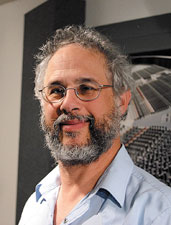By Steve Oppenheimer
(February 2003)
This year marks the 20th anniversary of the adoption of the MIDI Specification, the fruit of a rare cooperative effort between manufacturers, primarily Sequential Circuits, Roland, and Yamaha. For a long time, the Musical Instrument Digital Interface was considered esoteric, and even after it had been around four or five years, a surprising number of musicians were unfamiliar with it. Amusingly, some even mispronounced the acronym as “mye-dye” or “em-one, dee-one.”
Before MIDI, interfacing studio gear mostly consisted of sending audio signals from one device to another, the same way things had been done for decades. Control voltages offered rudimentary control of a few synths, and several companies had proprietary networking schemes. But if you wanted synths from different companies to work together, your options were slim.
Esoteric and underrated it may have been, but MIDI revolutionized the world of music production in the personal studio. True, the later development of powerful computers and affordable digital audio recording and editing, combined with a variety of lower-cost components, brought about another sea change. But MIDI was there first, and for many musicians it made one-person production efforts practical.
Today, with a few obvious exceptions, virtually everything in the studio can be MIDI controlled, and with some preparation, you can treat your hardware and software as if they were a single integrated device. Sequencing has become a fine art, and a single sequencer template can load every device’s sounds and settings. You can even use MIDI to control stage lighting and some forms of home automation.
The MIDI Specification is still at version 1.0, but it has been expanded considerably over the years. Manufacturers have also gone beyond the spec; for instance, MIDI data is now carried over FireWire and USB. Nevertheless, MIDI could still be improved. It is a low-resolution protocol, with most messages being limited to 128 values. MIDI devices do not intelligently exchange detailed information about their features; you have to know the MIDI implementation for each device and program accordingly. High-speed networking protocols that support MIDI (such as mLAN) are still in their infancy. MIDI is not an ideal protocol for some types of instrument controllers, and parts of the spec are underutilized, such as Polyphonic Aftertouch.
Developing standards is very difficult in the music-tech industry, despite the efforts of the MIDI Manufacturers Association, which is entrusted with MIDI’s development. Most companies look for ways to differentiate their products, not standardize them, unless they can see an immediate payoff. That is understandable, but MIDI is proof that well-developed standards help expand the overall market. Clearly, the companies that created MIDI in the face of apathy and even opposition deserve a lot of praise.
An improved MIDI spec and better support for the existing protocol may be long overdue, but MIDI 1.0 works pretty darned well as is. MIDI’s 20th birthday is a great achievement, marking a development that has benefited all electronic musicians.
